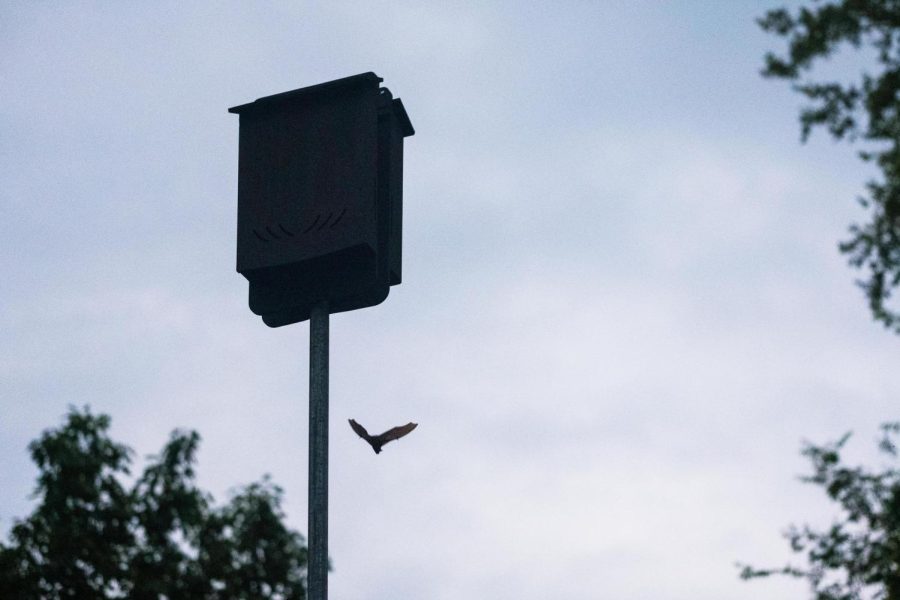How you can count bats in the name of science
A Mexican free-tailed bat emerges from a bat box mounted behind the Museum of Arts and Sciences in Macon recently.
Originally published: May 17, 2023
It was a little before nightfall when Georgia Department of Natural Resources biologist Trina Morris and a half dozen people stared at a box on a pole against an overcast sky.
“We definitely want to have a bright sky behind so we can watch them when they drop out,” Morris said.
“They” were bats and it was the box, this colony’s version of a roost, out of which they were about to drop.
It’s been a tough couple of decades for North American bats.
Where they live in caves, a fungus has been laying waste to their colonies by the millions. A recent report said over half of the continent’s bat species are at severe risk of population loss.
Meanwhile, bats living outside caves are doing better, but there’s still a lot to learn. That’s why every summer the Georgia Department of Natural Resources asks everyday people to help by counting bats on summer evenings.
Trina Morris was going to teach the half-dozen volunteers how to do that by counting the type of bats she already knew were Mexican free-tailed bats.
“These are the bats that are under the Congress Avenue Bridge in Austin,” she said.
An as-yet-untold number of them could be seen tucked in together in the narrow slots of the bat box from underneath. Their annoyed chirping was audible.
“They’re tough and they’re tiny.”
So how many were in this one box? Well, fewer than in Austin, for sure, where 1.5 million live under that one bridge. To be exact here, there had to be a count.
Ethan Hatchett was the bat monitor trainee. This would be the roost he would track in the DNR bat monitoring program.
“I’ll be a good landlord,” Hatchett said.
So what’s the job?
“Do you have your smartphone and do you have the bat roost monitoring form pulled up?” Morris asked.
Georgia DNR has an online form where volunteer bat counters can record what they see at their roost.
“So, like, how windy it is, the temperature, what the sky looks like, the date, where we’re at,” Hatchett said.
Once the form is filled out, Trina Morris said you wait until the bats take to the air.
Then you count.
When these bats decided to drop, they did it quickly. The small group trying to keep track of their numbers laughed and struggled just a bit as numbers jumped from five to eight to tens of bats in minutes.
“If they start pouring out, you kind of try to count them in like five or 10, you know?” Morris advised.
And, she said, you really have to keep your focus.
“So you just, like, have to stare. Which makes your neighbors think you’re crazy.”
After the rush of bats subsided, the group had a number: 152 Mexican free-tailed bats.
“What more do you want out of a Friday night?” Trina Morris joked as everyone packed up their folding chairs.
She hopes others agree, and will help her monitor Georgia’s bats this summer, wherever they are.
This story comes to The Macon Newsroom through a reporting partnership with GPB News, a non-profit newsroom covering the state of Georgia.













